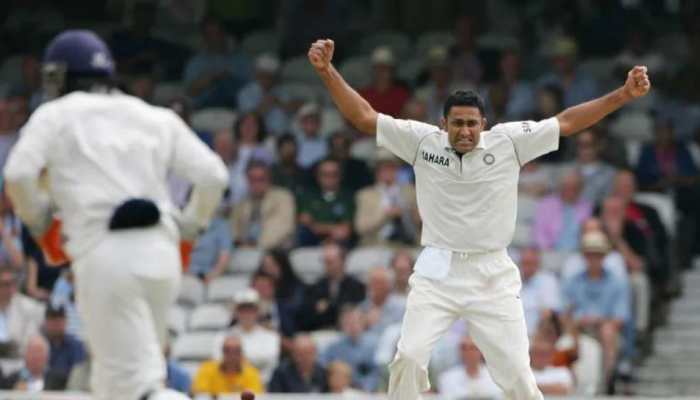Fresh cold wave hits Delhi, temperature drops to 1.4 degrees Celsius; no relief in sight till...
Earlier, Delhi saw an intense cold wave spell from January 5 to January 9, the second longest in the month in a decade.
Trending Photos
)
New Delhi: A fresh cold wave hit the national capital on Monday (January 16, 2023) with the minimum temperature at the Safdarjung observatory, the city's base station, dropping to 1.4 degrees Celsius, which is said to be the lowest in the month since January 1, 2021. The weather station at Lodhi Road, where the India Meteorological Department (IMD) headquarter is located, recorded a minimum temperature of 1.6 degrees Celsius. The minimum temperature also plunged to 2.8 degrees Celsius at Ayanagar in southwest Delhi, two degrees Celsius at the Ridge in central Delhi, and 2.2 degrees Celsius at Jafarpur in west Delhi.
The minimum temperature in Delhi has dropped by around nine notches in just two days. It was 10.2 degrees Celsius on Saturday and 4.7 degrees Celsius on Sunday.
On January 1, 2021, Safdarjung had recorded a minimum temperature of 1.1 degrees Celsius. It logged a minimum of 1.9 degrees Celsius on January 8 this year.
Hisar (Haryana) recorded a minimum temperature of 0.8 degrees Celsius today, Safdarjung (Delhi) 1.4°C, Amritsar (Punjab) 1.5°C and Rajasthan's Alwar 0°C, Pilani 1.9°C, Churu -2.5°C & Sikar -2°C: India Meteorological Department (IMD) pic.twitter.com/nngjrwbQGx — ANI (@ANI) January 16, 2023
"There has been heavy snowfall in the Himalayan region due to a strong western disturbance (WD). Cold northwesterly winds started sweeping the plains after the WD retreated on January 14. The sharp dip in the temperature is due to clear skies which allowed the infrared radiation (heat from the sun) to escape back into space at night," Mahesh Palawat, a senior meteorologist at Skymet Weather, said.
It is notable that Delhi saw an intense cold wave spell from January 5 to January 9, the second longest in the month in a decade.
According to IMD data, the city has also recorded over 50 hours of dense fog this month so far, which is the highest since 2019.
Temperatures likely to fall further by about 2 degrees Celsius
The IMD has said that the minimum temperatures are likely to fall further by about 2 degrees Celsius over many parts of northwest and central India till January 17-18.
It also predicted that cold wave to severe cold wave conditions are very likely over many parts of Delhi, Rajasthan, Punjab and Haryana during this period.
"Ground Frost likely at isolated places over Himachal Pradesh, Punjab, Haryana, and Rajasthan from January 16 to 18," it said.
Temperatures to rise from January 18
The met department said that minimum temperatures will gradually rise by 3 to 5 degrees Celsius from January 18 to January 20 under the influence of a western disturbance.
A western disturbance is a weather system characterised by warm moist winds from the Middle East. The wind direction changes when a western disturbance approaches a region.
The chilly northwesterly winds from the mountains stop blowing and lead to an increase in temperatures.
North India saw below-normal minimum temperatures till January 10-11
The IMD had earlier said that the large parts of north and northwest India recorded below-normal maximum and minimum temperatures till January 10-11.
According to meteorologists, this was due to a layer of dense fog that persisted over the Indo-Gangetic plains during the period and a large gap between two western disturbances, which meant frosty winds from the snow-clad mountains blew in for a longer-than-usual period.
What are cold waves and cold days?
In the plains, a cold wave is declared if the minimum temperature dips to 4 degrees Celsius or when it is 10 degrees Celsius and 4.5 notches below normal.
A severe cold wave is when the minimum temperature dips to 2 degrees Celsius or the departure from the normal limits is by more than 6.4 notches.
A cold day is when the minimum temperature is less than or equal to 10 degrees Celsius and the maximum temperature is at least 4.5 notches below normal.
A severe cold day is when the maximum temperature is at least 6.5 notches below normal.
Stay informed on all the latest news, real-time breaking news updates, and follow all the important headlines in india news and world News on Zee News.
Live Tv







)
)
)
)
)
)
)
)
)
)
